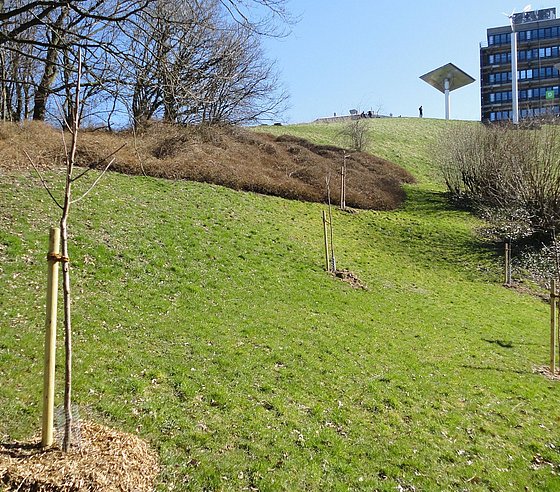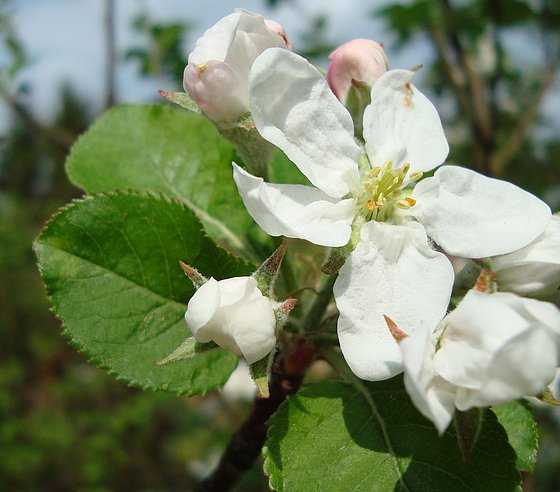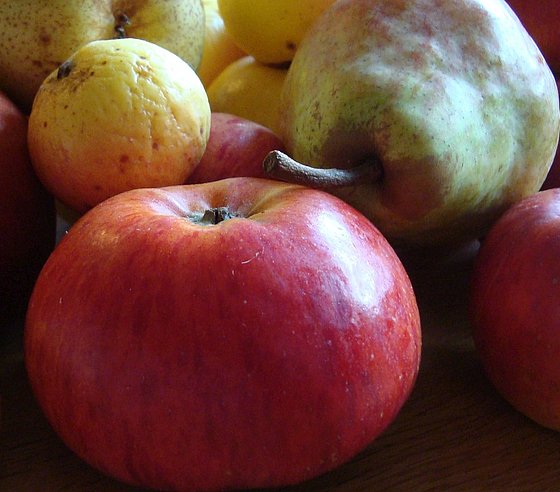

Apfelblüte am Baum

March - Orchard meadow
A meadow orchard is an area of grassland on which grafted standard fruit trees are scattered. The term 'high trunk' refers to trees that are grafted in such a way that the crown with side branches is formed further up the trunk, as opposed to low and medium trunks. 'Grafted' means that the desired fruit variety has been grafted onto a rootstock. Strong-growing and hardy varieties are generally used as rootstocks (roots and a very short trunk area). The trees in meadow orchards can usually form a large crown and are not very demanding in terms of soil conditions or care requirements. The individual trees in such an orchard meadow can easily be distinguished.
The fruit trees may be different varieties of apple, pear, plum or cherry. Often, there are varieties that do not belong to the 'modern' varieties. The species and variety composition can vary greatly from region to region to ensure the best possible fit with the location and intended use. The names of some varieties indicate their origin; for example, the apple variety "Rheinischer Krummstiel".
As the fruit trees in a meadow orchard are rather scattered, combined utilisation is possible. The trees are used to produce fruit, while the grassland underneath can be used to produce hay or grazed by livestock. To maintain high biodiversity in the grassland, it is optimal to utilise the meadow by mowing it twice a year. Regular pruning of fruit trees is necessary for a good harvest.
Orchard meadows used to be common in the landscape
Orchard meadows were a common feature of the landscape until the 1950s. However, due to changes in agriculture and the development of former outlying areas, they are now rare and among the most endangered biotopes in Germany and Central Europe.
Orchard meadows are very valuable from an ecological point of view
They provide a habitat for insects, birds, spiders and other small animals. Extensive cultivation of the area under the trees enables the development of species-rich grassland, which is home to many flowering herbs and grasses. The fruit varieties themselves also naturally contribute to biodiversity and the preservation of the gene pool of traditional fruit varieties.
Orchard meadow on the university campus
In North Rhine-Westphalia, an orchard meadow is defined as having a minimum area of 0.15 hectares (1,500 m²) and containing at least nine tall or medium-sized fruit trees (see LANUV-NRW for more information on nature conservation). The orchard meadow on the Grifflenberg campus does not quite meet these criteria. Last autumn, the botany working group planted nine standard trees by the north-western foot of the Flügelhügel (on the footpath or steps leading into the city). Various apple, pear, plum and cherry trees have been planted on the slope and will hopefully bear a rich harvest one day.
